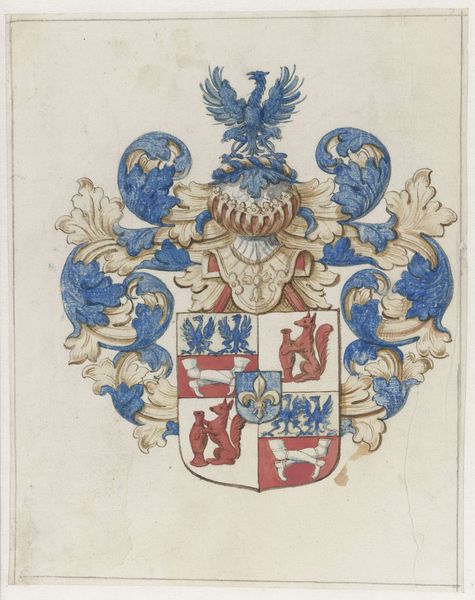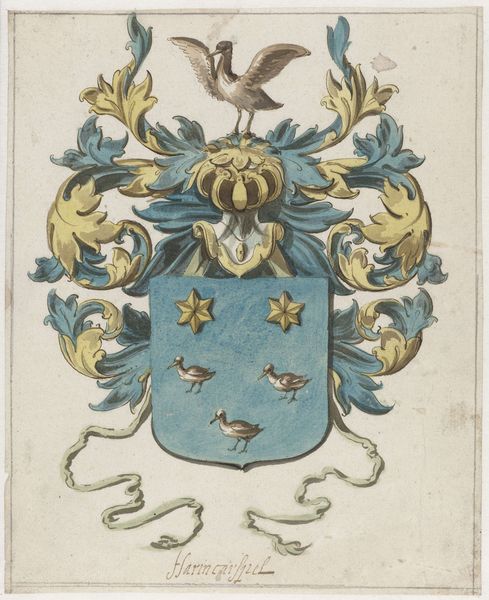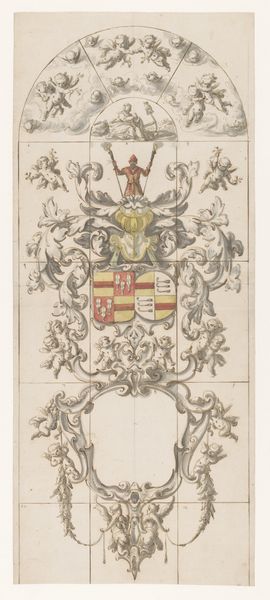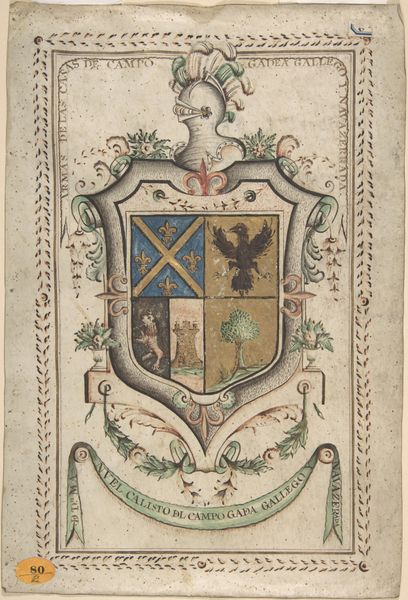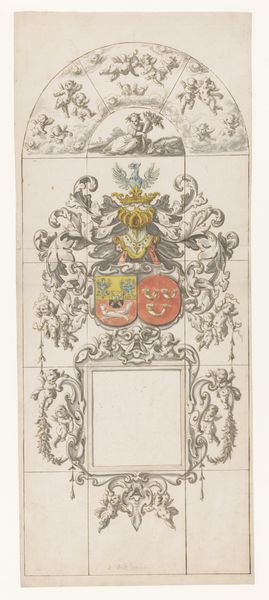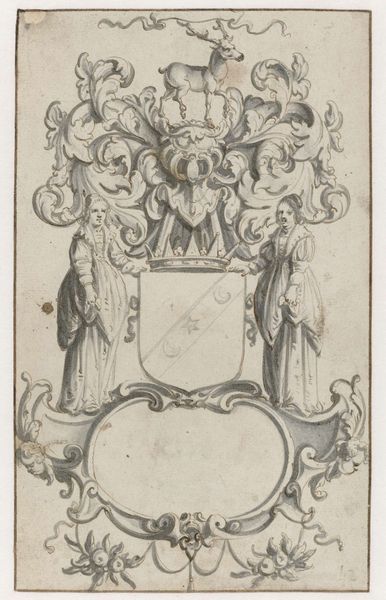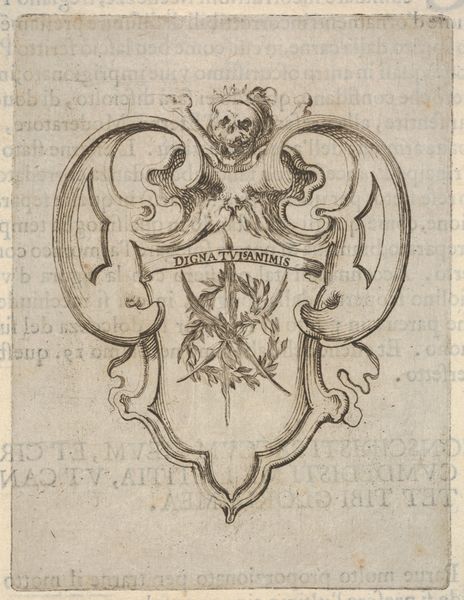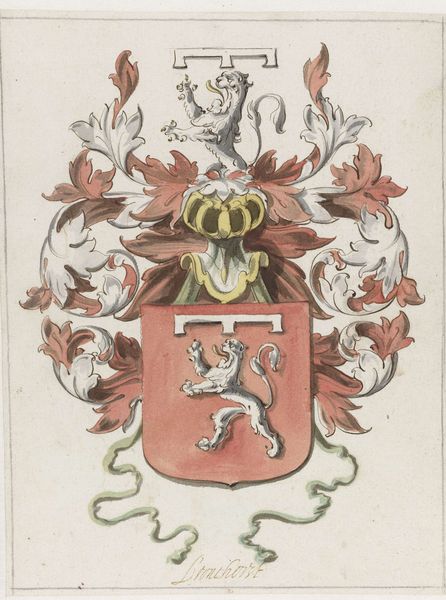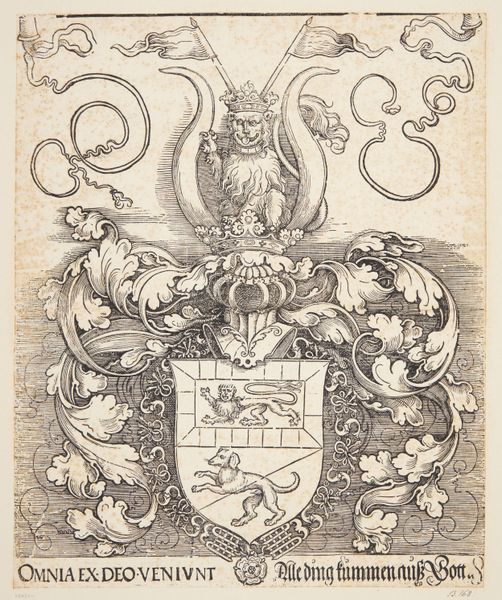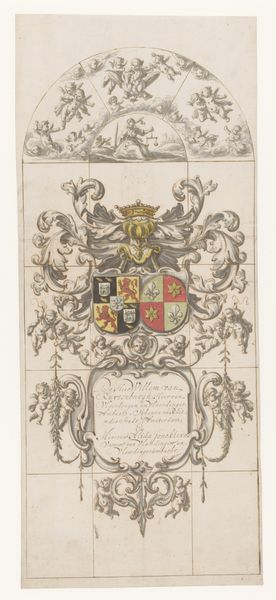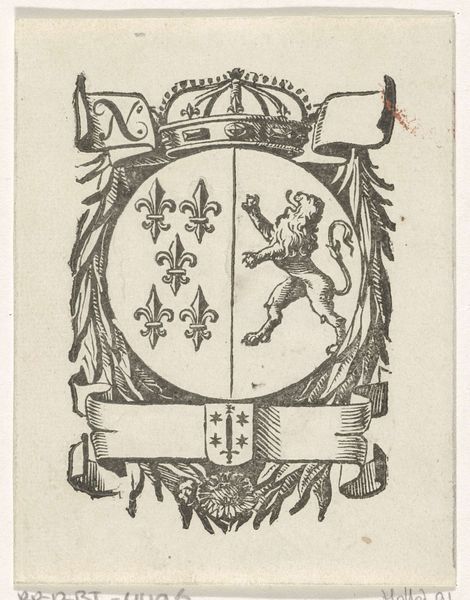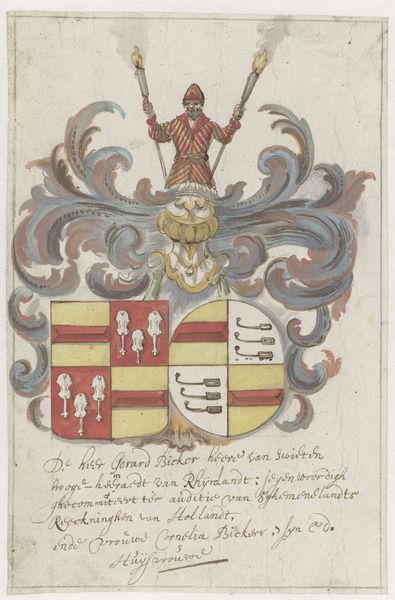
drawing, watercolor
#
drawing
#
toned paper
#
caricature
#
curved letter used
#
figuration
#
watercolor
#
coloured pencil
#
watercolour illustration
Dimensions: height 152 mm, width 90 mm
Copyright: Rijks Museum: Open Domain
Curator: This intriguing drawing is titled "Wapen van Willem Bardes," dating roughly from 1600 to 1649. It appears to be rendered with watercolor and possibly colored pencil on toned paper. What strikes you first about it? Editor: The overall feeling is ornate, yet oddly intimate. It feels hand-crafted, almost like a personal emblem or a gift, not something mass-produced. The muted colors lend a sense of history and perhaps even melancholy. Curator: Precisely! Consider the material conditions of its making. This wasn't high art meant for a gallery. It's likely a personalized object. The toned paper, watercolor, and coloured pencil point to the relatively accessible nature of its production. It speaks volumes about the emergent possibilities available to someone of a lower status than royalty seeking to emulate such heraldry. Editor: Absolutely. The iconography also reveals status, but in a more symbolic manner. The wreath, held aloft, implies victory or honor, which were clearly of immense social importance. Then, the shield itself—the core visual element. What family narratives are embedded there, and how were those images designed to convey a particular lineage? Curator: I think the curved letter style, along with the flourish and details, also suggest it wasn't meant for wide distribution, thus signifying something very intimate or symbolic within the context of a household, familial object, or business ledger of the era. Editor: And how might that social function have influenced its style? I mean, it almost borders on caricature. The floral embellishments are over the top and the hands look strangely small. The exaggeration in form, and the inclusion of symbolic elements, contributes to an image that walks the line between a formal pronouncement of rank and playful self-definition. Curator: That's the genius of understanding production. The artist had access to methods of crafting but maybe less so to aristocratic standards of flawless depiction. This pushes the materiality itself to carry expressive weight, as a reflection of laboring hands in contact with materials in such early manufacturing settings. It’s incredibly potent! Editor: Incredibly insightful, both of you! It really has encouraged a great understanding.
Comments
No comments
Be the first to comment and join the conversation on the ultimate creative platform.
